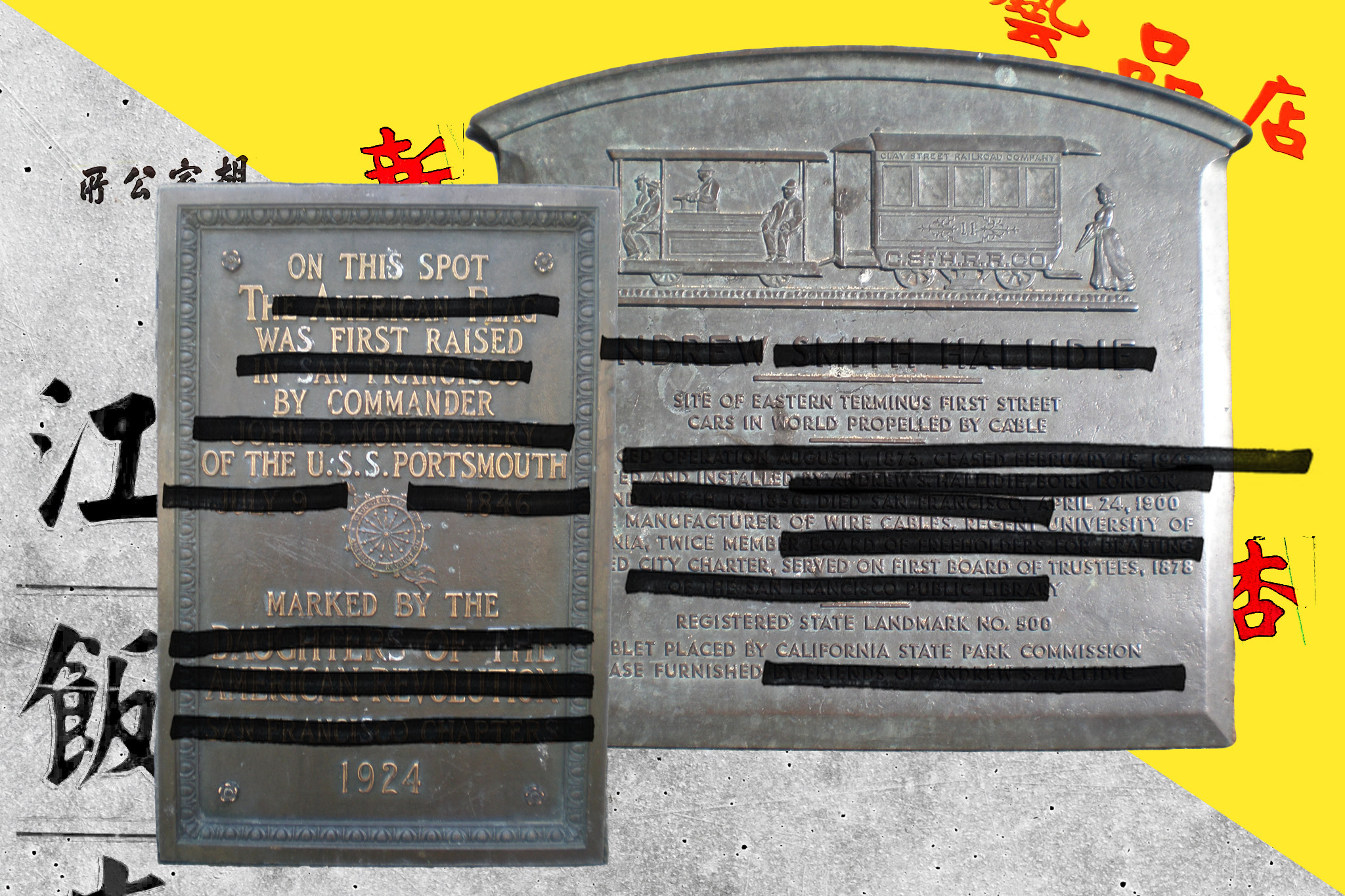San Francisco is planning a much-needed $60 million makeover of Portsmouth Square. The square adjacent to the heart of Chinatown is so heavily used by that district’s residents that it is known as “Chinatown’s living room.”
As a result, Chinese American activists have long called for the public art in Portsmouth Square to more adequately represent their community’s rich history in San Francisco. That’s a perfectly reasonable request: Aside from a bronze replica of the Tiananmen Square Goddess of Democracy and six sculptures representing animals of the Chinese zodiac, there are no monuments or public art in the square that commemorate Chinese or Chinese American culture or history.
But activists and some Chinatown residents have also made a much more radical request. They have called for the removal of three culturally and historically significant monuments on the grounds that they have nothing to do with Chinatown and its residents, or even that they erase their history. And the city, at least provisionally, has agreed with them.
This is astonishingly wrongheaded, and it represents a ridiculous, dangerous, new low in San Francisco’s willingness to remove monuments in the name of political correctness and “listening to the community.”
Portsmouth Square is the city’s historic ground zero. During the Mexican era, it was the Plaza, the center of the hamlet of Yerba Buena that was to become San Francisco. It’s where troops from the U.S.S. Portsmouth, after whom the square was named, raised the American flag during the Mexican-American War. During the Gold Rush, it was the frenzied heart of the instant city of San Francisco. The first cable car rolled past it in 1873. From 1900 to 1961, it was the site of San Francisco’s Hall of Justice. And on and on.
The city’s Chinese residents have a long history in the area, dating back to the Gold Rush. However, the square has not always been “Chinatown’s living room.” Portsmouth Square may be part of Chinatown now, but for most of its history, it was a fascinating transitional space, located where three distinct neighborhoods came together: Chinatown, Jackson Square and the Financial District. Until the old Hall of Justice was torn down in 1962, and for some years after, Portsmouth Square was a heterogeneous central urban square, like a seedy version of today’s Union Square. Residents of Chinatown have always used it, but as a demographic group, they did not dominate it until the late 1960s.
But even if Portsmouth Square had been used predominantly by residents of Chinatown since the Gold Rush, that would not justify removing monuments that commemorate other important events or figures associated with the square. The city is proposing to remove these historical markers:
—An 1897 monument to the great writer Robert Louis Stevenson, designed by famed architect Willis Polk and esteemed designer Bruce Porter. Stevenson used to sit for hours in Portsmouth Square, watching the world go by.
—A marker on the place where the first American flag was raised in San Francisco during the Mexican-American War.
—A plaque honoring Andrew Hallidie, inventor of the cable car that later became synonymous with San Francisco.
All three of these monuments are obviously culturally and historically worthy. By calling for their removal on the grounds that they do not reflect Chinatown or Chinese American history, the activists are, in effect, asserting that Chinese Americans own the history of Portsmouth Square. But they don’t, any more than any other group does. That history belongs to all of us.
The demand that monuments be removed because they have nothing to do with the Chinese community is tantamount to insisting that monuments in Philadelphia’s Independence National Historical Park be removed because they have nothing to do with, say, the Irish. It is an attempt to erase history, and the fact that those proposing it belong to a historically marginalized group does not justify it in the slightest.
History belongs to everyone
The absurdity of the city’s proposal becomes even clearer when one compares it to the controversy over some of the earlier monuments it removed, such as the “Early Days” statue in the Civic Center, various monuments in Golden Gate Park and the Christopher Columbus statue at Coit Tower. In my opinion, none of those monuments should have been removed.
But whether one agrees or disagrees with the city’s decision to remove them, at least the activists demanding their removal could make a case that those monuments were offensive to them, which is why the city piously proclaimed that they did not “reflect San Francisco values” as the reason for their removal. No such argument can be made here. These monuments are not offensive to Chinese Americans and do not erase their history. This is purely a historical power move, based on current land use and the politically correct apotheosis of “the community.”
City officials emphasize that they have not reached a final decision about what to do with the monuments. Hopefully, they will realize that the obvious answer here is not to subtract history, but to add to it. This is not a zero-sum game.
By all means, the city should erect new monuments commemorating the Chinese and Chinese Americans in San Francisco, and Portsmouth Square is an appropriate place to do it. The $60 million makeover offers the city an opportunity to commemorate not just the deep Chinese history in the square but also other major events that have taken place there.
But removing existing monuments from San Francisco’s richest historic site does nothing to enhance the commendable goal of commemorating Chinese history. In fact, it degrades it.
Gary Kamiya is the author of the best-selling books "Cool Gray City of Love:49 Views of San Francisco" and "Spirits of San Francisco: Voyages Through the Unknown City." His award-winning column now appears on his Substack, Kamiya Unlimited.
